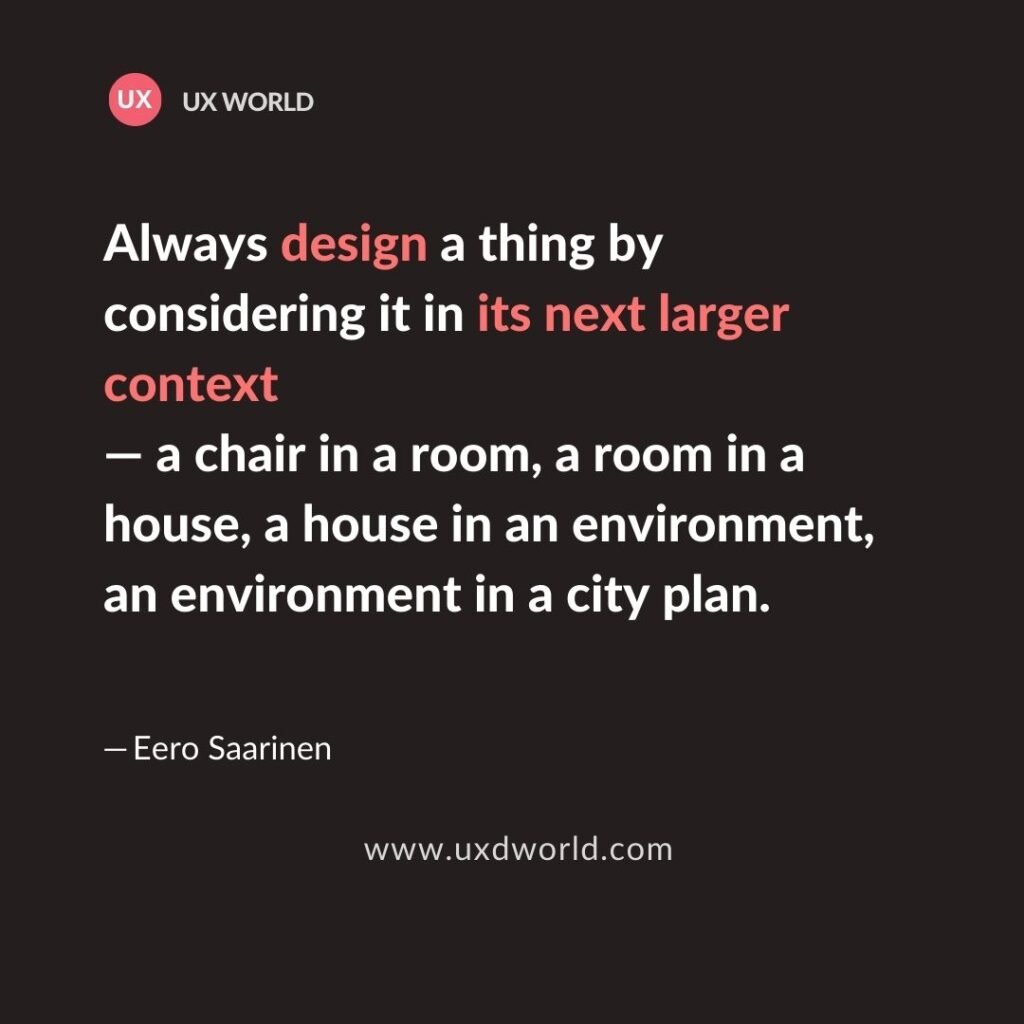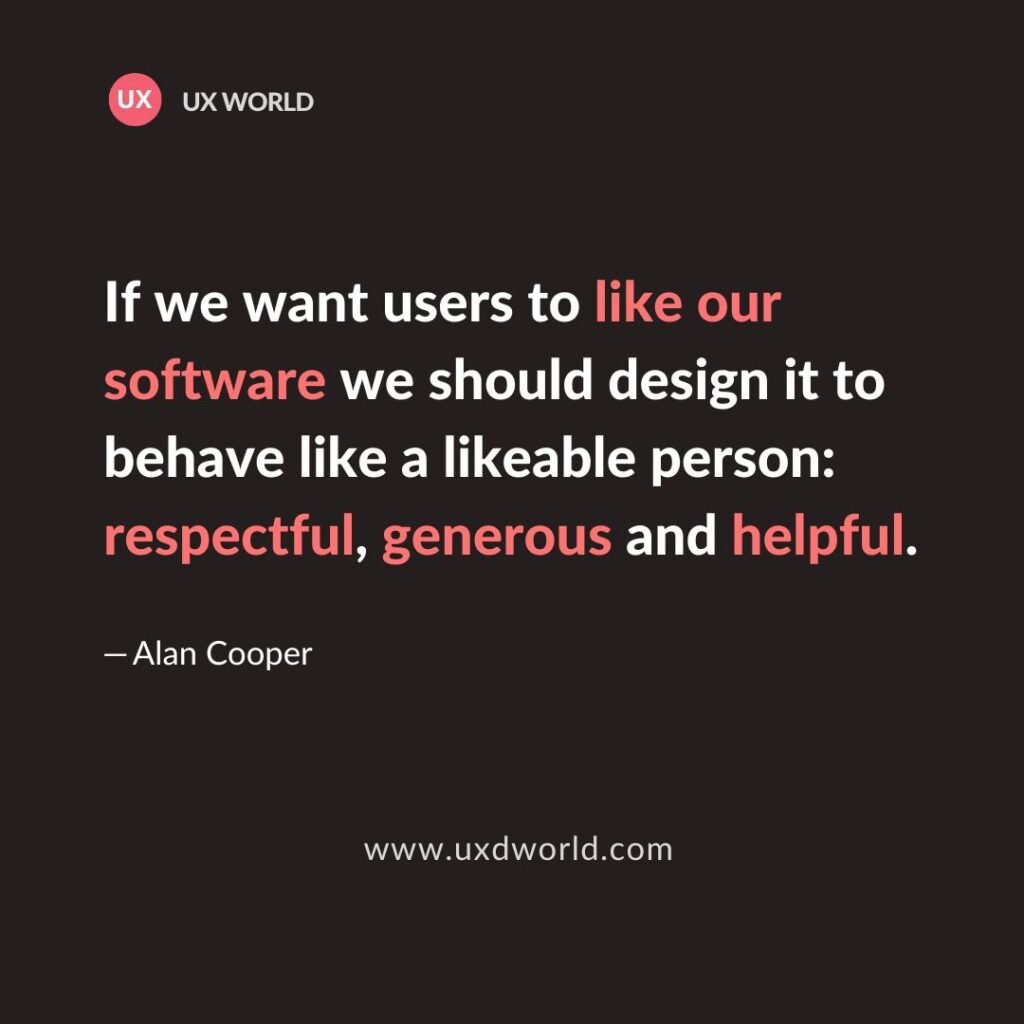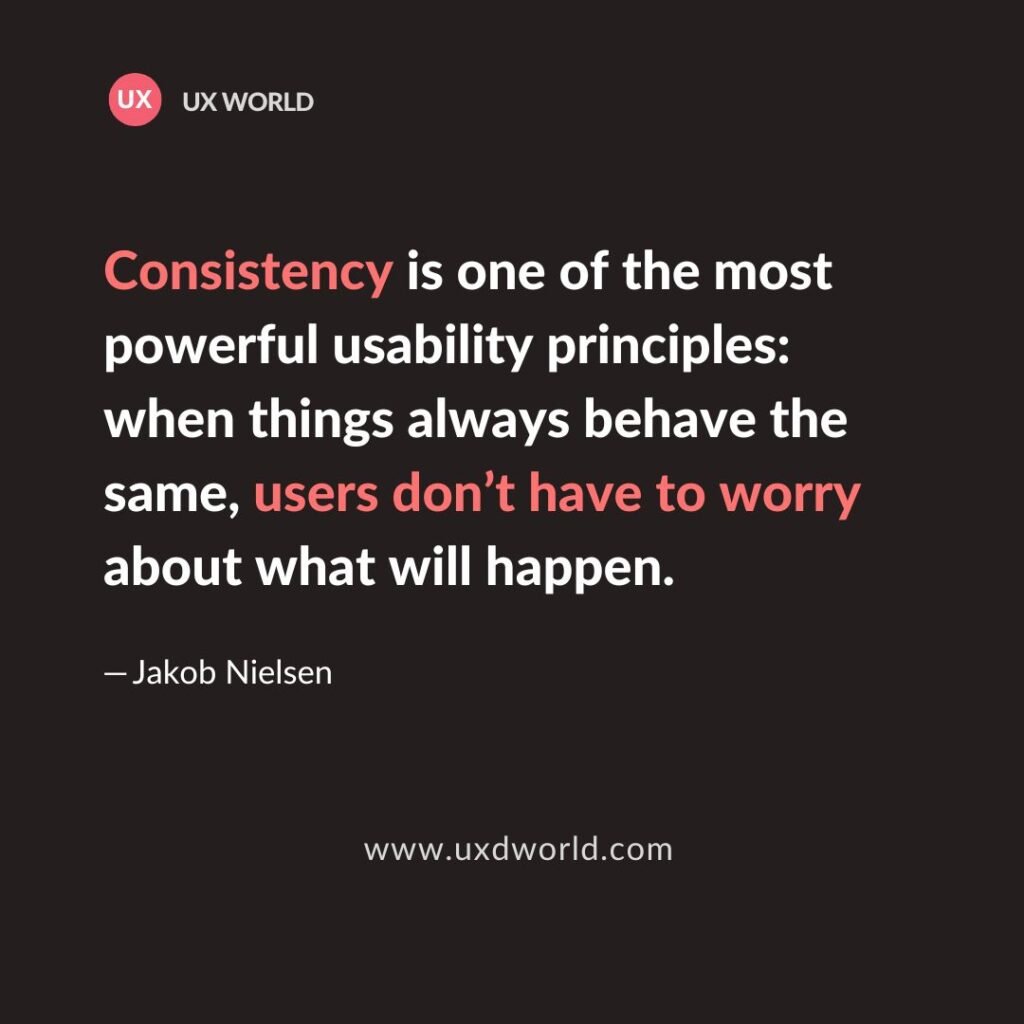Last Updated on July 5, 2024 by UX World
“Always design a thing by considering it in its next larger context—a chair in a room, a room in a house, a house in an environment, an environment in a city plan.” — Eero Saarinen
This quote focuses on a rule that applies to design whether you are building a house or working on a software product. It highlights the importance of context in design.
“Context is everything based on which you can design your product better.”
Consider an example of designing a chair.
What information do you need when your client asks you to build a chair for them?
In addition to characteristics of the chair like type and material, an important question is to know the context in which the chair will be used.
- Why do the users need this chair?
- What do they want to achieve using this chair?
- If the chair will be placed in the outer garden, or if it is to be used for office work, or if it is to be placed in the bedroom?
After knowing the context in which your client will use the chair, it will become easier for you to decide about its design.
Similarly, you cannot design a room without thinking about the whole house, and you cannot design a house without knowing about the area environment, or colony where you are going to build the house.
The context of a product is the circumstances or settings in which it will be used and which adds meaning to its existence.
The same concept is applied to user-centered design.
A UX designer needs to know the broader vision of the product that is being designed. They need to know:
- Who is going to use this product?
- What is its real usage and purpose that users want to achieve?
- What is the environment in which this product will be used?
If we ask designers to design a text editor, without knowing the information of the context in which this editor will be plugged in and used, they cannot design a good experience.
They need to know whether this editor is an independent reusable component, or it will be used inside a Design editor. There would be more questions to clarify in both cases. After knowing the larger context of the text editor, they will start thinking about the experience they should design that will better help the user.
The quote also mentions one more thing, the next larger context, so what does it mean?
Considering a bigger picture or context does not mean you should start over-thinking and go beyond the realistic approach. You cannot think about the context of the whole world while designing a chair.
There should be a limit to the context you consider while designing a feature. If you go to a deeper level, it will become difficult for you to handle a huge set of information and you will not be able to decide from where to start. So, it is good to go deeper into the next level or two and design the feature.
Design is communication and clear communication requires a common understanding of the problem you are solving. The design context allows us to clarify the problem as well as the scope. If the context of users and designers is not aligned, the end product will never satisfy the users.
I would love to know how the design context information helps you to better understand the design problem and reach the desired solution.
Want to Learn UX Design?
Try Interaction Design Foundation. IxDF offers online design courses that cover the entire spectrum of UX design, from foundational to advanced level. As a UX Design World reader, you get 25% off your first year of membership with the IxDF.
Thanks for reading.
Subscribe for more related articles at UX World.
If you have any questions, contact us here: Facebook | YouTube | Twitter | Instagram | Linkedin



